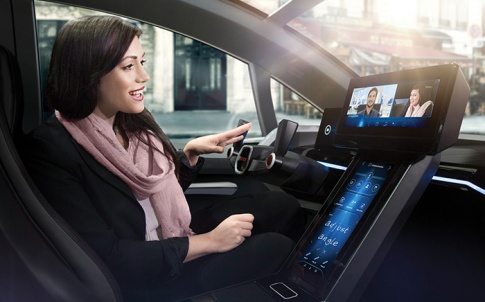
Today’s cars negatively affect our climate, our time, our physical abilities, our finances and our living and working environments. Coupled with the safety aspect of driving, which relies on a person performing well, human error (including, but not limited to, boredom, limited reaction times, limited attention span, tiredness, mood) has amounted to the cause of 90% of road accidents.
The International Journal of Intelligent Unmanned Systems recently published a paper discussing the management of single and multilane roads with driverless cars. It argues, by using intelligent systems, such as radar, laser, GPS, odomotry and computer vision, that the 90% of road accidents mentioned above can be eliminated altogether. It also states that by embedding Spatial Grasp Language (SGL), the resulting infrastructure can mediate traffic increases by slowing down and ‘pre-empting’ traffic hotspots, as well as navigating past broken down vehicles safely, changing lanes and overtaking slower vehicles. All in a more efficient and safer way than a human driver ever would.
This smart technology will not only help to decrease emissions, because these cars are likely to be electric, but it will reduce idle time because traffic jams are likely to decrease too. It will also allow us to think differently about how we commute.
Typically, the average household tends to have two vehicles with each car only used approximately 5% of the time and is parked the other 95%. An unmanned car can be utilized much more. In addition, a driverless car isn’t needed at a fixed location during working hours. It can drive you to your work, and take family members to another location. If you opt into a car share scheme with others travelling on the same route as you, the cost of commuting could also be slashed significantly.
With the natural reduction in cars per household that this could incur, our green space could increase and allow for more facilities such as hospitals, schools and homes to be built. Parking systems could change too. There may be no need for passenger lifts and lighting for humans or even parking spaces as we know them.
Our living spaces will see a transformation as part of a driverless revolution. There will be a reduced need for drives and garages because of the potential reduction of car ownership. The changes to street planning, therefore, could be huge; property development may be rethought, causing housing layouts to be altered, and even pavements to be widened because of a lesser need for street parking.
Whilst all of this is going on and our whole way of working, living and learning will change, driverless vehicles will mobilize our disabled and elderly population. The impact on the health industry will be momentous. People who found it difficult to leave their homes will be able to go out with less effort than ever before. Imagine the elderly neighbour who struggles to walk to the nearest convenience store, they will now be able to summon a driverless car for essential and social meetings and, in turn, be less isolated.
Cars will be able to navigate a range of real time driving variables. According to research in Industrial Robot: The International Journal the Google car “uses cloud services to access Google’s maps, images and data on prior driving trajectories, together with weather and traffic conditions, to determine its spatial position and make decisions. Data from each car are shared via the network for statistical optimization and machine learning performed by cloud-based grid computing.” We’re also seeing developing technologies in speech recognition being incorporated into a 12 passenger electric vehicle made by Local Motors, a specialist car manufacturer based in Arizona. This equipment uses cloud tech for customer interaction rather than navigation. It allows customers to “interact conversationally” whilst customers can also ask details about local destinations.
So the lesson for engineers? It seems that the introduction of driverless cars could not only transform our roads, but impact on the health of our population, the planning of our cities, and how we work. So it’s vital we look at the impact on society and how we can make our world a better place.
To read more on this topic you can explore the resources which are available to freely access until 31 January:
Peter Simon Sapaty, (2017) "Distributed control technology for management of roads with autonomous cars", International Journal of Intelligent Unmanned Systems, Vol5.2/3 http://www.emeraldinsight.com/doi/full/10.1108/IJIUS-05-2017-0006
Robert Bogue, (2017) "Robots that interact with humans: a review of safety technologies and standards", Industrial Robot: An International Journal, Vol. 44 Issue: 4 http://www.emeraldinsight.com/doi/full/10.1108/IR-04-2017-0070
David Metz , (2017), Future Transport Technologies for an Ageing Society: Practice and Policy, in Charles Musselwhite (ed.) Transport, Travel and Later Life (Transport and Sustainability, Volume 10) http://www.emeraldinsight.com/doi/full/10.1108/S2044-994120170000010009
Robert Bogue, (2017) "Cloud robotics: a review of technologies, developments and applications", Industrial Robot: An International Journal, Vol. 44 Issue: 1, http://www.emeraldinsight.com/doi/full/10.1108/IR-10-2016-0265
This item of promoted content was produced and supplied by Emerald Publishing




Red Bull makes hydrogen fuel cell play with AVL
Formula 1 is an anachronistic anomaly where its only cutting edge is in engine development. The rules prohibit any real innovation and there would be...